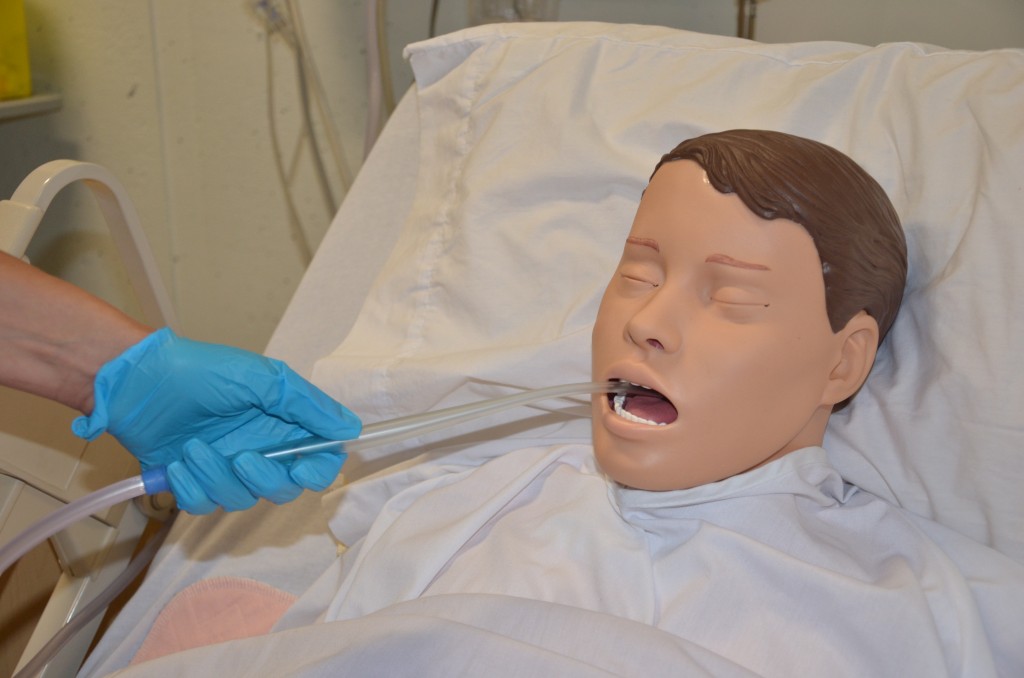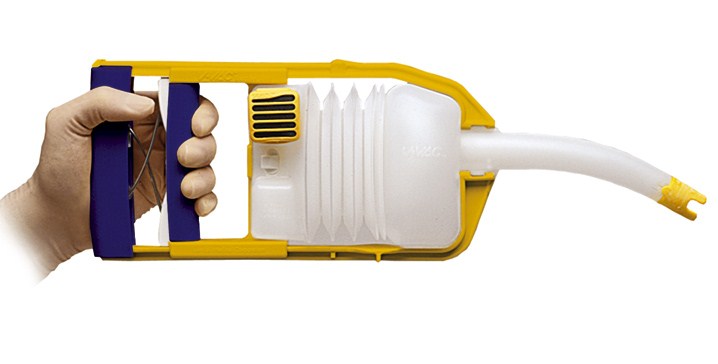Suctioning
Published (updated: ).

Airway suctioning refers to the collective measures that are used for clearing the airway of a patient. It involves suctioning, clearing secretions, and maintaining the patency of the airway. It is of particular importance for patients with mechanical ventilators, endotracheal tube (ET) intubations, tracheostomies, or other airway adjuncts. Clearance of airway secretions is a normal process and is critical to the prevention of respiratory infections, atelectasis, and preservation of airway patency. Patients on mechanical ventilation and intubated patients are at risk of increased secretions as they are sedated, supine, and have mechanical adjuncts that prevent spontaneous clearance of secretions. Suctioning can help maintain and establish the gas exchange, adequate oxygenation, and alveolar ventilation. Suctioning can be performed through an endotracheal tube, a tracheostomy tube, the mouth, or the nose.

There is no consensus on the time interval for suctioning airways. It depends on the clinical picture; such as the age of the patient, the associated risk factors, and the ease of obtaining adjunct airway equipment in case of disruption or loss of the airway.
Indications
- Suctioning of airway in mechanically intubated patients
- Suctioning in patients with altered mental status or under the effects of sedatives or hypnotics
- Suctioning for patients with neuromuscular disease, atonia, or hypotonia
- Suctioning of patients with copious respiratory secretions
- Infants and children with respiratory diseases and distress
- Obtaining endotracheal or tracheal samples for cell counts and cultures
- Monitoring efficacy of treatment
Contraindications
There is no absolute contraindication to suctioning of the airway. Risks are associated with suctioning and should be weighed as per individual patient specific needs. Care should be taken if patients have bradycardia, hypoxia, or other similar complaints or concerns. Risks and benefits have to be calculated for the benefit of the patient.

Equipment
An oxygen source, vacuum source, sterile gloves, stethoscope, calibrated, adjustable regulator, collecting bottle and tubing, normal saline, and or sterile water for irrigation should be prepared and ready prior to suction. Personal protective equipment should always be used and includes a gown, mask, and preferably goggles. Use of sterile gloves is recommended. Sterile lubricant should be used for nasal suctioning.
It is important to use adequate caliber tubes or suction catheters to prevent injuries, dislodgement, or perforation.

Preparation for suctioning also depends on an emergent versus a non-emergent need for suctioning. In cases of acute respiratory distress, where obstruction of the airway or the airway adjunct is suspected, suctioning must be performed emergently with even minimal preparation. Care should be taken to maintain sterility while suctioning the endotracheal/tracheostomy tubes. Suctioning of the oropharynx or the nasopharynx does not require complete sterility.
Complications
- Suctioning can stimulate the vagal nerve, predisposing the patient to bradycardia and hypoxia.
- Hypoxia can be profound from occlusion, interruption of oxygen supply, and prolonged suctioning.
- Mucosal trauma, physical injuries, and bleeding can result from blunt or penetrating trauma.
- Infections can result from the introduction of commensals into the respiratory tract.
- Pain and discomfort can result from suctioning.
- Anxiety can be associated with suctioning.
Clinical Significance
Suctioning is a lifesaving procedure requiring timely and precise methodology. If done appropriately with caution, it decreases the risk of infection, pooling of secretions, and prolonged hypoxia.

Suctioning of the airways should be performed by skilled personnel with appropriate preparation. Suctioning has both therapeutic and diagnostic benefits. It is important to gather appropriate equipment prior to suctioning and have adequate knowledge of the airway anatomy, the airway adjuncts in use, and the equipment available.
Suctioning of the airway should be performed with adequate care to avoid injuries, trauma, bleeding, prolonged hypoxia, and bradycardia. Preparation is the key, and the personnel should be aware of the complications and corrective measures. Suction, oxygen, pharmacy, equipment, and adequate medications are absolute prerequisites to obtaining and maintaining a successful patent airway.
